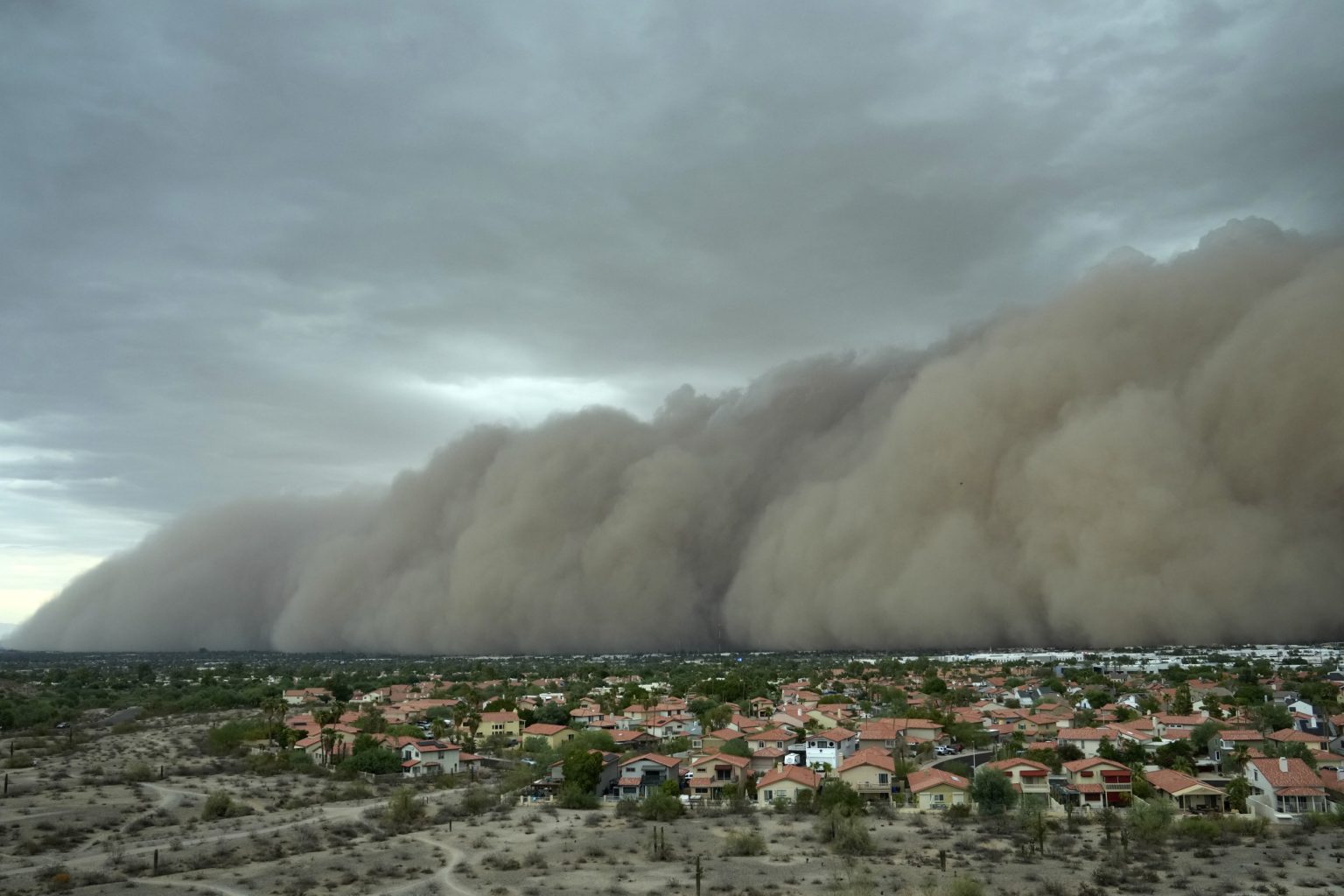Massive Dust Storm Sweeps Through Phoenix, Disrupting Lives and Infrastructure
In a dramatic turn of weather events, Phoenix residents found themselves engulfed by an enormous dust storm on Monday that transformed day into an eerie twilight, stranded travelers, and left thousands without electricity. The powerful storm, known locally as a haboob, rolled across the metropolitan area with startling speed, reducing visibility to a mere quarter-mile and forcing motorists to pull over as the wall of dust enveloped the city. This weather phenomenon, while not uncommon in Arizona’s desert climate, struck with particular intensity, creating hazardous conditions that disrupted daily life across the Valley of the Sun.
The experience proved terrifying for many caught in the storm’s path, including mother Bernae Boykin Hitesman, who was driving her children home from school when visibility deteriorated so severely she had no choice but to stop. “I couldn’t see my hand in front of my face if I put my hand outside,” she recounted to the Associated Press, her voice still carrying traces of the alarm she felt in those moments. “It was that bad.” Her account reflects the experiences of countless others who found themselves suddenly plunged into near-darkness as the massive cloud of dust descended upon the city, transforming familiar landscapes into unrecognizable, hazy silhouettes. The rapid onset left many without time to prepare, forcing impromptu decisions that prioritized safety over schedules.
The storm’s impact extended far beyond momentary inconvenience, as it severely disrupted the region’s infrastructure and transportation systems. Phoenix Sky Harbor International Airport, one of the nation’s busiest air travel hubs, was forced to ground flights as the dust cloud made safe takeoffs and landings impossible. The ripple effects spread throughout the national air traffic system, as connecting flights were delayed or canceled, leaving passengers stranded not just in Phoenix but at airports across the country. Meanwhile, on the ground, the storm wreaked havoc on the electrical grid, with more than 15,000 residents finding themselves without power by Monday evening as utility lines succumbed to the combination of dust and wind.
Recovery efforts began immediately, with utility crews working through the night to restore electricity to affected neighborhoods. Their diligence paid dividends, as the number of customers without power had decreased to approximately 4,000 by Tuesday morning, according to tracking site poweroutage.us. The substantial improvement reflected the prioritization of essential services and the commitment of local emergency response teams to minimize disruption to daily life. Nevertheless, for those still without electricity, particularly during Arizona’s notoriously hot summer months, the outages represented more than inconvenience—they posed potential health risks, especially for vulnerable populations such as the elderly and those with medical conditions requiring powered equipment.
While the immediate impacts were severe, the dust storm also serves as a reminder of the complex relationship between human development and the natural environment in arid regions. Phoenix’s explosive growth over recent decades has transformed desert landscapes into urban neighborhoods, altering natural dust patterns and potentially contributing to the intensity of such storms. Climate scientists have noted that changing precipitation patterns and increasing temperatures may exacerbate dust storm frequency and severity in the American Southwest, making events like Monday’s haboob less exceptional and more routine in coming years. The storm thus stands not as an isolated weather event but as part of a broader pattern that residents and city planners must increasingly take into account.
As Phoenix residents awoke Tuesday morning to clearer skies and began the process of cleaning fine dust from homes, vehicles, and businesses, the community demonstrated the resilience that has long characterized life in challenging environments. Local news stations shifted from emergency coverage to recovery information, providing guidance on safely handling dust-related cleanup and checking on vulnerable neighbors. Though the dramatic wall of dust had passed, its effects lingered in both practical and psychological dimensions—a powerful reminder of nature’s capacity to temporarily overwhelm even the most sophisticated urban environments. Officials continue to monitor conditions, aware that the summer monsoon season that typically brings these dust events is far from over, and the next haboob may be building on the horizon.


